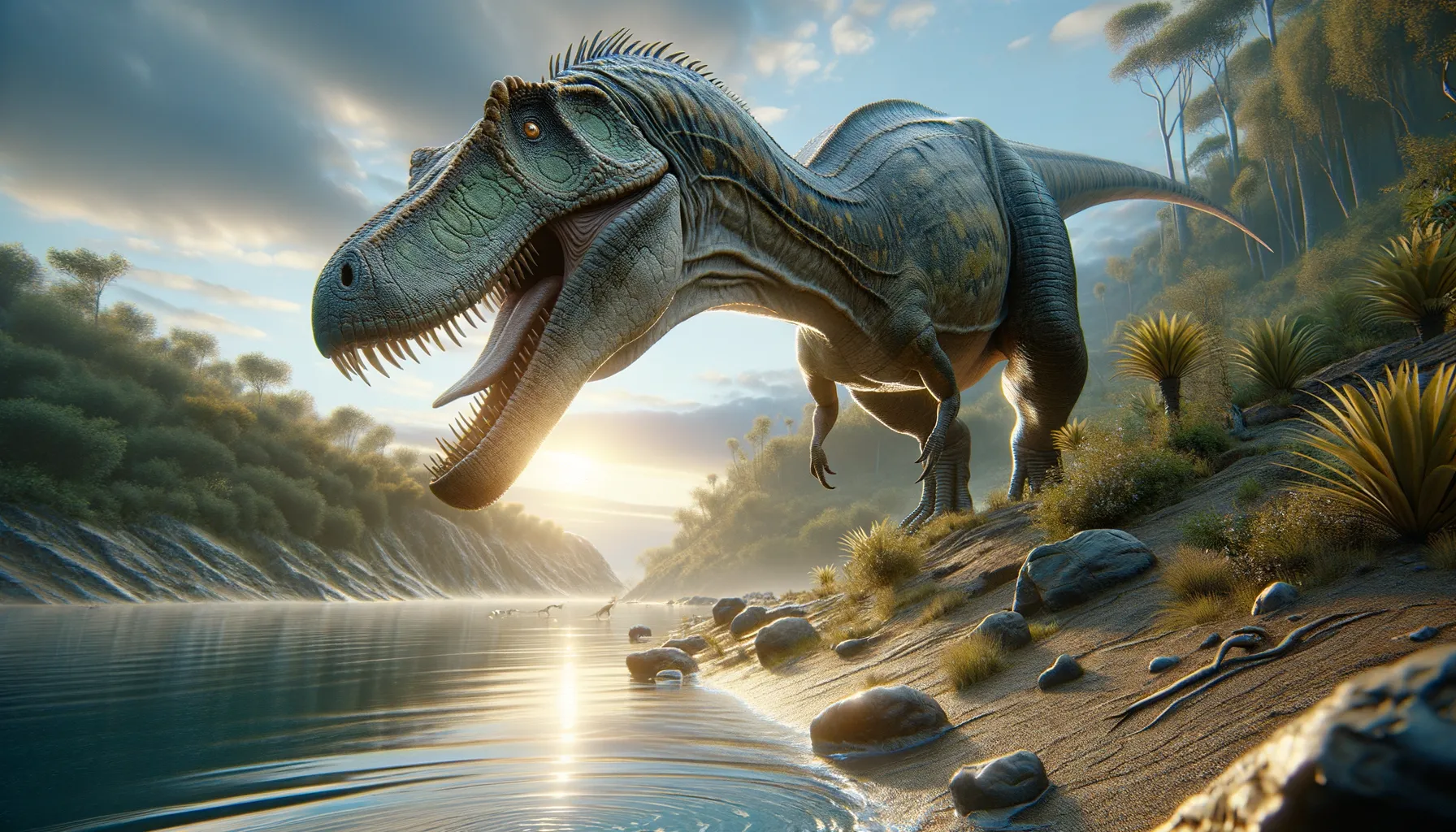
Irritator
A Cretaceous crocodile-like predator.
Period
Cretaceous
Length
Up to 8 meters long.
Height
Around 2 meters at the hip.
Weight
Approximately 1 ton.
Irritator was a theropod dinosaur known primarily from remains found in Brazil. It lived during the early Cretaceous period and is recognized for its elongated snout, similar to modern crocodiles. This dinosaur is thought to have been a piscivore, meaning it primarily fed on fish. Its discovery added valuable insight into the diversity of theropod dinosaurs in South America.
Diet
Irritator primarily fed on fish, thanks to its specialized snout and teeth adapted for catching slippery prey. Its diet probably included small to medium-sized fish and possibly other aquatic animals.
Hunting
Using its elongated snout and conical teeth, Irritator likely used its powerful neck to thrust into the water and catch fish. It might have been an ambush predator, lurking in shallows or riverbanks, waiting for prey to come within reach.
Environmental challenges
Living in a semi-aquatic environment, Irritator faced challenges such as fluctuating water levels and competition from other predators. Seasonal changes might have affected food availability, requiring adaptation in hunting strategies. The presence of larger predators also posed a threat, necessitating quick escapes or stealthy hunting habits.
Speed
Moderate speed, similar to a modern-day crocodile.
Lifespan
Estimated to be around 15 to 20 years.
First discovery
Found in Brazil in the early 1990s.
Fun Facts
- Irritator was a theropod dinosaur that lived approximately 110 million years ago during the Early Cretaceous period.
- This dinosaur was named 'Irritator' because the fossil skull was initially misidentified and altered by fossil dealers, which annoyed the scientists studying it.
- Irritator is thought to have been about 8 meters long, making it a relatively large predator of its time.
- Paleontologists believe that Irritator likely had a diet that included fish, as its conical teeth resemble those of modern fish-eating creatures.
- The only known Irritator fossil was found in the Ceará region of Brazil, highlighting the diverse prehistoric life that once thrived in South America.
- Irritator's elongated snout and crocodile-like appearance suggest it was well adapted to hunting in water or along riverbanks.
- Interestingly, Irritator is closely related to the famous Spinosaurus, another fish-eating dinosaur with similar adaptations.
Growth and Development
Growing steadily from a hatchling, Irritator likely experienced various stages of development similar to birds and reptiles. As it grew, its hunting techniques and prey selection would have evolved, possibly leading to a broader diet. Sexual maturity probably occurred before reaching full adult size, common in many theropod dinosaurs.
Habitat
Irritator inhabited lush, semi-aquatic regions in what is now modern-day Brazil. Its environment included rivers, lakes, and dense forests, providing ample opportunities for hunting fish. The warm, humid climate supported diverse flora and fauna, enriching its ecosystem.
Interaction with other species
Being a mid-sized predator, Irritator likely interacted with a variety of species, including larger predatory dinosaurs and contemporary aquatic creatures. Its interactions might have been competitive when it came to food sources. Social interaction with its own species is less clear but might have involved territory establishment or mating displays.
Natural lifespan
Irritator is estimated to have lived up to 20 years in the wild.
Reproduction
Irritator likely laid eggs in nests, possibly in secluded areas near water bodies to ensure offspring survival. Parental care might have been minimal after the eggs hatched, with juveniles relying on camouflage and instinct to avoid predators.
Social behaviour
While there is limited evidence of complex social behavior, Irritator might have exhibited some territoriality to protect hunting grounds. Social interactions were probably limited to mating rituals and brief encounters. Solitary or small group hunting was likely more common than pack behavior.
Fossil locations
Irritator fossils have been primarily found in the Santana Formation in Brazil. This location has provided well-preserved remains, offering insight into its structure and lifestyle. The fossils contribute to understanding the diversity of the Cretaceous period in South America.
